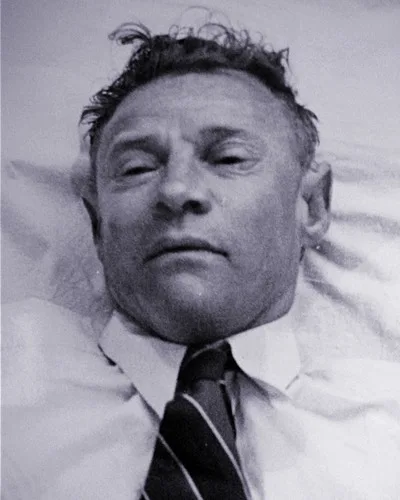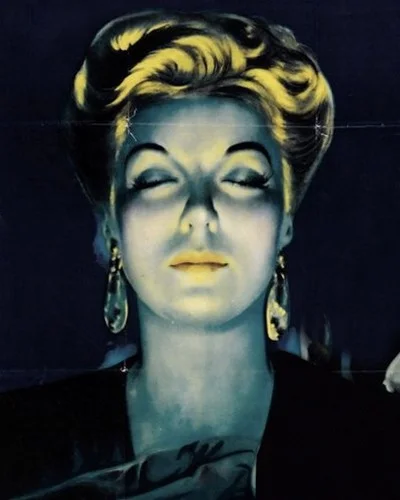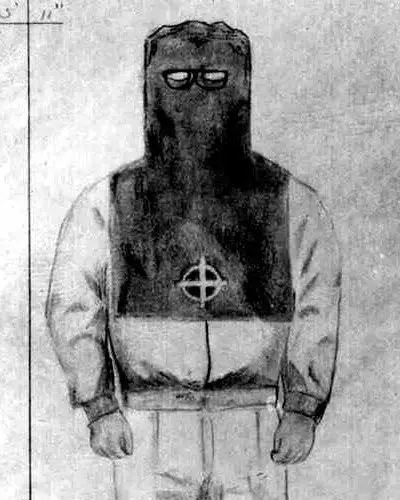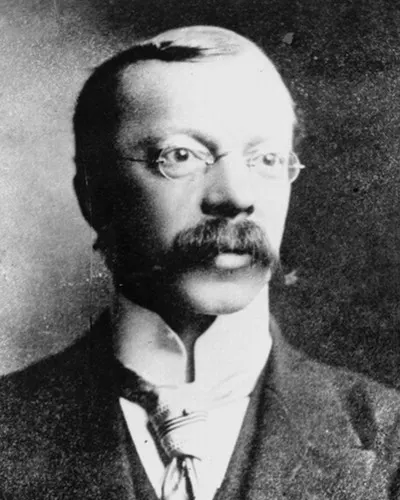It had all the hallmarks of a classic locked room mystery. The body of a British spy found dead inside a sports bag, its zipper padlocked shut from the outside.
Incredibly London’s metropolitan police concluded the death was “probably an accident”. Their conclusion overturned an official inquest’s findings that the death was “unnatural and likely to have been criminally mediated”.
This uncertainty highlighted just why this was one of the most perplexing and complex unsolved murders in recent history. A case mired with contradictions and mysteries, obscured by secrets and lies and centering on a man who himself was an enigma.
That man was 31-year-old Gareth Williams, a brilliant mathematician and codebreaker at the UK’s secret communications monitoring station GCHQ. William’s work, thought to involve cyberterrorism, was classified top secret.
He was approaching the end of a one-year secondment to MI6, Britain’s foreign security service, when on August 23 his naked, heavily decomposed body was found curled up inside a padlocked red sports holdall in the bath of his top floor flat at an MI6 safe house.
Unusual features of the crime scene made the police’s job virtually impossible from the start. Even though it was the middle of summer, the heating in the flat had been left on at the highest setting, hastening the decomposition of Williams body and making it impossible for the pathologist to ascertain the cause of death.
Odder still was the lack of DNA or fingerprints in the bathroom and on the bag. Even if William’s could have somehow locked himself in the holdall, how could he have done so without leaving any forensic traces behind?
There were no obvious signs he had struggled to release himself from the bag and suicide looked unlikely in the supremely odd circumstances. Detectives were left with the overriding suspicion that Gareth Williams had been murdered.
A suspicion only deepened by the fact that the front door to Williams’ flat had been locked from the outside, indicating someone else had been at the premises before detectives had arrived. Whoever it was, had they cleaned the crime scene after them?
The obvious possibility was Williams had been killed by professionals in connection with his top secret work for MI6. But were they enemy agents or his own side? And why had the murder, if it was murder, been staged in such a bizarre fashion?
For detectives, they were facing a crime straight out of the pages of a Sherlock Holmes story. And in the absence of the great detective, they would have to try and find some answers from Gareth Williams’ employers at MI6.
Unfortunately, during the course of the subsequent investigation, the security services would consistently thwart attempts by the metropolitan police to properly investigate the crime. Crucial evidence was withheld and William’s colleagues were not allowed to be interviewed.
Some even suspected MI6 of smearing the dead man in the media after lurid stories started to appear in the newspapers, from unknown sources, about Gareth Williams’ private life and his apparent predilection for bondage and transvestitism.
Whilst £20,000 in women’s clothing and a long red wig were found in his flat, the leaks to the press appeared to be a cynical attempt by someone to steer the story away from murder towards some kind of sex game gone wrong scenario.
MI6's role in the case became subject to even greater scrutiny when it was discovered that Williams had been missing for more than a week before anybody at his employers reported his absence.
The idea that someone involved in top secret work vital to the UK’s national security would be allowed to go missing for so long struck many as particularly unbelievable. Could MI6 really be so grossly negligent or did they have something more sinister to hide?
In May 2012, an official coroner’s inquest fiercely criticised both MI6 and their police liaison SO15 for obstructing the police inquiry and withholding evidence. Their evidence to the inquest, given in secret, was widely regarding as unconvincing.
But for the coroner Dr Fiona Wilcox, the central issue was still whether Gareth Williams could have locked himself in the bag from the inside. Employing experts in confined spaces, hundreds of attempts to replicate the feat were made without success.
On this and the balance of other evidence the inquest found William’s death was probably due to “criminal mediated” actions from a third party. As a result, the metropolitan police reopened the case and spent more than a year re-examining the evidence.
In November 2013, Deputy Assistant Commissioner Martin Hewitt told the press that his investigation had, controversially, concluded that Williams’ death was “most probably” an accident, although he also acknowledged the numerous gaps in their knowledge about the case.
This belated reversal of the inquest’s findings did little to reassure the public or Williams’ family that foul play had not played a part in his death. Lingering questions remain unanswered, including the most important of all.
Was Gareth Williams murdered?
Evidence for
The Clean-up
Some of the detectives who worked on the case in its early days were convinced the crime scene had been forensically ‘dry-cleaned’, security service jargon for the removal of incriminating evidence such as fingerprints and DNA.
Former Detective Chief Inspector Colin Sutton was one of the first officers to arrive at the crime scene, “I remain convinced the flat was tidied up after his death”, he told London’s Daily Mail.
“That may have been to protect national security or it might have been something more sinister. If that’s the case, then it could have been the perfect murder”.
No fingerprints or DNA other than Williams’ own were found in the flat, although curiously none of this was found in the bathtub in which the body had been found, curled up inside a locked red sports bag.
William’s body was naked when it was found, so if he had placed himself in the bag, it’s difficult to see how he could have done so without leaving DNA or fingerprints in the bathtub.
Likewise, no fingerprints or DNA was found on the zipper or the padlock, which Williams would have had to vigorously manipulate in order to lock himself in the bag, and he was not wearing gloves.
The curious lack of forensic evidence wasn’t the only thing that thwarted detectives investigation. When the police arrived at the flat, they were surprised to discover the heating was in at the maximum setting, despite the fact Williams had died during the middle of a warm summer.
The excessive heat hastened the decomposition of the body, meaning pathologists were unable to determine the cause of death. Some of the detectives at the scene felt this was another attempt by an unknown third party to destroy evidence, a suspicion also echoed by the coroner.
One further troubling piece of evidence seemed to confirm the crime scene had been cleaned up. Williams’ phone was laying on a table when his body was discovered, but police found it had been restored to its factory settings just hours before his death.
At the inquest, coroner Fiona Wilcox was particular concerned by this, suggesting that the phone may have been used to arrange the meeting with Williams’ killers.
Harry Houdini
So much of this most baffling of cases revolves around the issue of whether Gareth Williams could really have locked himself in the sports bag from the inside.
To this end, numerous reconstructions were attempted, supervised by two experts in confined spaces, William Mackay and Peter Faulding. Together they made over 400 attempts to try and lock themselves into the same type of red North Face duffel bag in which Gareth Williams’ body was found.
Neither were able to replicate the feat. “We got close, but close is still far away. That was based upon hundreds and hundreds of attempts, maybe if we had tried it 2,000 times we would have done it, I don’t know, but there were two of us”, Mackay said.
“I cannot say it is impossible but I think even Houdini would struggle with this one”, Faulding told the inquest. “I believe he was placed in the bag by a third person”.
Shortly after the inquest, army sergeant Jim Fetherstonhaugh came forward to claim he had have achieved what had defied the experts. Using a trick employed by airport thieves to steal from locked bags, Fetherstonhaugh was able to successfully demonstrate the technique with his daughter standing in for Williams.
However, Mackay dismissed the new evidence. “One person did come forward, but the eyelets weren’t put together, in the same way, we dispelled that method as it wasn’t the way that the bag was closed”.
Perhaps a more prosaic reason to doubt the accident theory is the lack of any signs of a struggle. If Williams had locked himself into the bag as part of a sex game and then found himself trapped, why had he made no attempt to free himself?
In such a situation, a natural reaction as the survival instinct kicked in would be to struggle with as much violence as could be mustered, yet there were no obvious signs of any damage to the bag or zipper, and Williams himself was curled up inside in a position described as “peaceful”.
Secrets and Lies
Although the exact nature of Gareth Williams’ work at MI6 has never been revealed, it was known he was an expert codebreaker engaged in top secret work crucial to national security. It has been speculated that his work involved terrorist communications and cyber-warfare.
On Monday 16th August, a week before his body was found, he was due to chair a meeting with his MI6 colleagues at their headquarters in Vauxhall Cross in London. William’s never turned up and remained absent all week. Astonishingly, nobody at MI6 reported him missing.
It wasn’t until Friday the 20th that his parent employers at GCHQ raised the alarm bells. The human resources department phoned Williams’ line managers at MI6 instructing them to check his flat, and if he could not be found, phone the police.
Even then, MI6 did nothing. It wasn’t until the following Monday, when GCHQ realised the police still hadn’t been alerted, that that they finally made the call themselves
“It beggars belief that that is what happened”, said professor Anthony Glees, head of the Buckingham University Centre for Security and Intelligence Studies.
“It should be stressed that it is standard practice in our secret agencies that if somebody is not at their desk, within an hour a search will be made for their whereabouts”, he added. “Someone working on national security like Gareth Williams does not go missing”.
The coroners inquest described the extraordinary delay as having “stretched the bounds of credibility” and MI6's conduct was also fiercely criticised by Gareth Williams’ family.
But despite the security services’ chief Sir John Sawers issuing an apology, no rational explanation has ever been given for the delay. Police detectives were unable to shed any light on the matter due to MI6's unwillingness to allow Williams’ colleagues to be interviewed.
It was clear then, the MI6 were engaging in a cover-up over Gareth Williams’ death, but to what purpose? Had he been captured and killed by foreign agents? And were MI6 responsible for the ‘clean-up’ of Williams’ Pimlico flat to conceal the murder?
It would not be the first time foreign intelligence services had murdered someone in the UK capital. In 1978, Bulgarian dissident Georgi Markov was infamously murdered with a poisoned umbrella on Waterloo Bridge, and Alexander Litvinenko was slipped a fatal dose of polonium in a cup of tea at a Mayfair hotel in 2006.
One security service witness at the inquest, testifying anonymously, did hint darkly that unauthorized searches Williams had made on MI6 computers may have put his safety under threat from hostile third parties, but did not elaborate on who.
Smear campaign
Almost as soon as the police investigation into Gareth Williams’ death started, so did the leaks. Anonymous stories started to appear in the press about his private life, along with lurid allegations that his death may have had a sexual motive.
Some stories suggested, on scant evidence, that Williams was gay, a transvestite and into bondage and S&M. Detective Chief Inspector Jackie Sebire, who led the investigation, admitted the leaks had distracted her team from genuine lines of inquiry.
Even more malicious rumors also circulated in the press that bondage gear had been found in Williams’ flat, alongside numbers for male escorts. One story even appeared that suggested Williams’ phones had been arranged in a ‘ritualistic’ fashion. All such stories turned out to be entirely untrue.
At the inquest, coroner Dr Fiona Wilcox ruled out a sexual motive to the murder and stated Gareth Williams was not a transvestite. Wilcox suggested the leaks had been cynical attempts to manipulate the evidence and steer the investigation away from the intelligence services.
But who was behind the off the record briefings? Were they just rumor mongering or did they have a darker purpose to distract the police from finding the real truth behind Gareth Williams’ strange death?
Sex games
Former intelligence advisor Crispin Black, who attended the inquest, suggested the ‘sex game gone wrong’ scenario is a favourite method of concealing murder for intelligence agencies.
“Disposing of an enemy and making it look like a perverted fantasy gone wrong is in the training manuals of every spy agency from MI6 to Mossad”, he wrote in Scotlands Daily Record.
"Disposing of an enemy and making it look like a perverted fantasy gone wrong is in the training manuals of every spy agency from MI6 to Mossad"
“[He] was found dead in a locked bag, in a flat full of women’s clothing and wigs and with his internet browsing history conveniently featuring bondage sites”, Black said.
“The sex game cover is a very useful mechanism in a murder. Not only does it provide a disguise for the actual means and method of death, it trashes the reputation of the victim and blunts the energy of any subsequent investigation”.
It is also not the first time suspicions have arisen that GCHQ employees had been murdered in this way. Since 1983, Stephen Drinkwater, Nicholas Husband, 46, and Kevin Allen, 31, have all died in bizarre circumstances that were ruled to be bondage or S&M sex games gone wrong.
Evidence against
The CSI effect
The lack of DNA and fingerprints at the crime scene provoked a tremendous amount of suspicion among detectives and commentators that Williams’ flat had been ‘cleaned up’ by his murderers. But it’s a misconception that forensic evidence is always found at murder scenes.
Prosecutors call this the ‘CSI effect’. In many modern trials, jurors have become so accustomed to the exaggerated portrayal of forensic science on television shows and films that they expect all cases to revolve around such evidence.
Many lawyers in murder cases will call a forensic expert to testify even if there is no forensic evidence in the case, simply because that’s the standard of evidence jurors demand.
In actual fact, only about 13% of murder cases involve any forensic evidence at all. Usable DNA evidence is only left behind at about 10% of crime scenes.
Even today, the vast majority of murder cases are still solved with a combination of circumstantial evidence and witness statements, with forensic or DNA evidence playing no part at all.
So, whilst the absence of handprints and DNA in the bathtub in Gareth Williams’ flat was unusual, it’s certainly not impossible that the combination of heat and moisture in the bathroom could have degraded any such evidence.
Predilections
Chief Inspector Jackie Sebire, the head of the murder inquiry, and the coroner both dismissed any sexual motive in Gareth Williams death. But some commentators have suggested this may have been a hasty conclusion.
The coroner’s explanation that the £20,000 in women’s clothing and the red ladies wig found in Williams’ flat were just ‘gifts for friends’ struck many as particularly absurd and unconvincing.
And although Police experts disputed that this was how it was done in William’s case, a technique was eventually discovered that would allow someone to lock themselves into a bag from the inside.
Could the bizarre death have been a sex game that went tragically wrong? Some evidence was found by investigators that Williams had shown an interest in bondage, an extreme subset of which is ‘claustrophilia’ the desire to be held in enclosed spaces for sexual gratification.
A previous landlady of Williams also told the inquest how she had once discovered him tied to his bed wearing only his boxer shorts. Williams had somehow contrived to tie both his hands and feet to the bed-posts, making it impossible to free himself.
Did this peculiar incident indicate Williams had a past predilection for ‘impossible’ feats of bondage? Or was the truth even stranger?
The unsolvable puzzle
Of all the theories in this elusive case, one esoteric possibility remains that could perhaps only have been devised by a mathematical genius whose profession it was to break codes.
Had Gareth Williams set up the whole thing himself? He spent his days solving the most taxing and complex puzzles of cryptography. Did he spend one lonely night devising the most perplexing conundrum of them all — the mystery of the spy in the bag?
A mystery only a genius detective from the pages of fiction could ever hope to solve.
Was an MI6 spy found dead inside a locked sports bag murdered? - add your comment below















